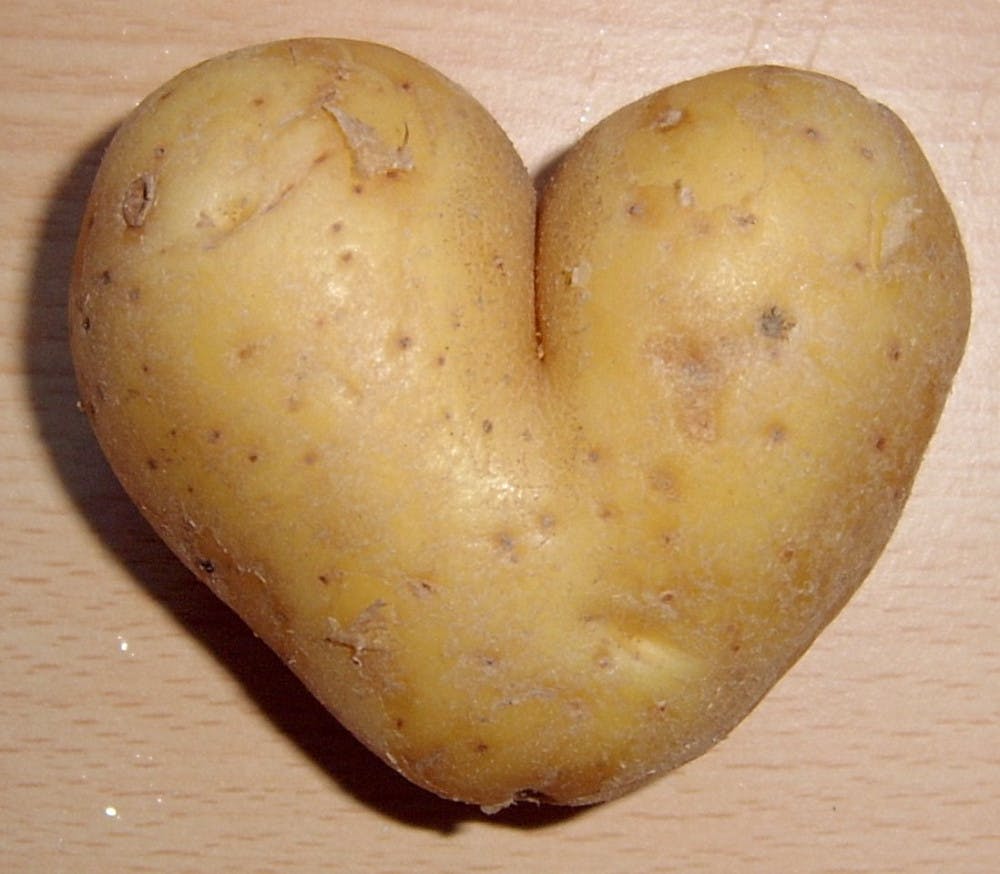
Potatoes are not exactly “cute” vegetables, and their constant availability at the grocery store may leave some gardeners cold to the idea of growing their own. However, a look at a potato plant may change your mind: they have bushy, leafy bodies topped by a few purple or white flowers. A patch of potatoes would look great planted alongside a fence or by the wall of a house, especially since the potatoes grow underground, so there won’t be any drooping branches come time for harvest.

Another benefit of growing potatoes is that you don’t need to go on a wild seed hunt. Potatoes that have sprouted eyes—keeping them in a warm, sunny place will encourage this—should be cut into chunks one or two days before planting. Small potatoes can be planted whole, and larger ones need one or two sprouts per chunk. If you don’t want to bury the potatoes in a garden, plant the potatoes in a container about a foot deep, or a barrel. Potatoes should be planted about a foot away from one another, half a foot deep. They look lovely planted in rows. It’s good to keep potatoes well watered, but not to flood them—water is especially important for potatoes during, and right after, flowering.
Gardening your own potatoes means that you will have access to young potatoes, which are tenderer than older potatoes. Young potatoes can be harvested about three weeks after the potatoes have finished flowering and should be eaten the same day they are harvested.
Later in the summer, after the plants have yellowed their leaves and began dying back, stop watering the potatoes and just let the harvest cure for three weeks or so—if it is rainy, dig up the potatoes and put them in a dry attic or garage, instead. This will make them good to store for a longer time.
Photo License:Creative Commons
Potatoes: A Fun Option for Sunny Gardens

